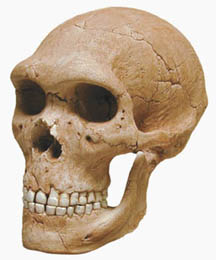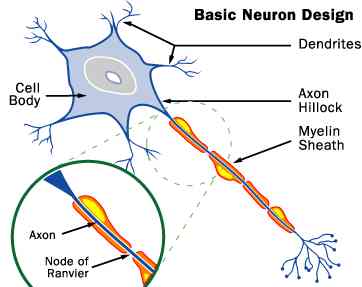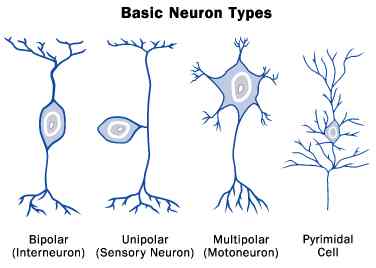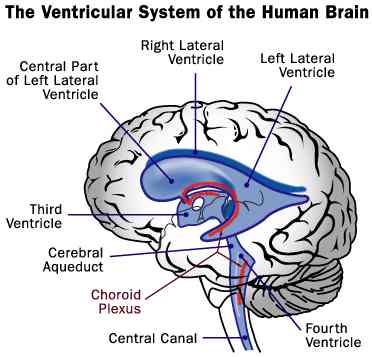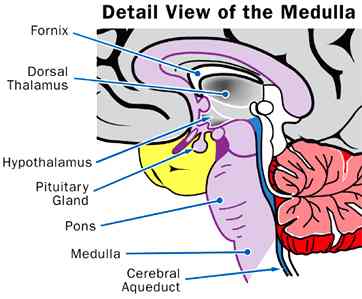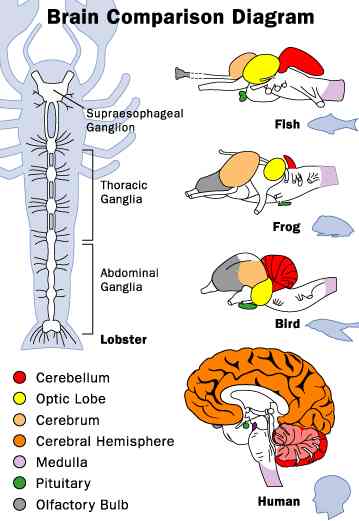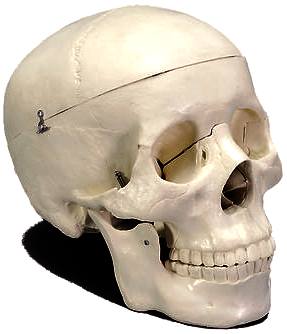|
THE HUMAN BRAIN
|
|||||||||||||||||||||||||||||||||||||||||||||||||||||||||||||||||||||||||||||||||||
The ability to think sets us apart from the animal kingdom. Of course the ability to think is linked to our other unique skills as tool users. Without one, the other could not have developed to put humans in pole position as the dominant species on the planet earth. But how did that happen? The simple answer is that man evolved over millions of years to be a hunter and problem solver while his partner evolved to defend the home. The age old partnership of man and woman is newly threatened by our modern lifestyle and some argue in the interests of equality, is no longer applicable, since a woman is every bit as capable of being the breadwinner in the modern world.
But none of that would be up for debate without approximately 100,000 years of near paradise conditions in the Olduvai Gorge, a ravine in the Great Rift Valley, Tanzania during the Holocene period, when mankind appears to have sparked intelligently to the levels that set us apart from other intelligences in the animal kingdom.
I like building things, but why? That process quite often sparks ideas which I may then develop methodically by thinking about. The two abilities complement each other. It turns out I'm very capable; painting, carving, etc, which surprised me. The old skills from Homo Habilis & Erectus perhaps passed to me by my mother's mitochondrial DNA? Who knows, but we are getting smarter. In the fictional 'John Storm' adventure above, the amateur anthropologist uses a CRISPR virus to cure the Pope of cancer. Having been accidentally injected himself, John enhances his own genome, making him exceptionally strong and smart.
The new modern world we have created for ourselves and our relationships to other humans, male and female, will undoubtedly influence how the brain develops in the future. You may have noticed students seem to get better grades each year. This is no accident. Look to the many advanced learning toys and look to computers. Also, take a look at how mass production is making basic tools more affordable, engines, wheels, metals. Then there are building materials, etc. Most of the controls now holding back our creativity are regulatory. Rules and the law. One problem as our efficiency grows, is that the planet has finite resources and we're also adept at procreating. We're going to need another planet - because of our brain. But hopefully, this same brain will figure that out along with other like minded brains and we'll find a solution.
Technology now exists to map and supercharge the brain and possibly even replicate the thinking pattern of one brain in another identical brain, which would of course require a clone. Don't think that's impossible. The law says it is because cloning humans is outlawed, but what happens if the technology gets into the wrong hands?
HOW THE HUMAN BRAIN EVOLVED
We slowly ascended from lower life forms to what we are today by a process of natural selection from randomly occurring changes. Each change had to prove its worth by surviving the continual battle for existence, being against being, species against species and this process has gone on for many millions of years. Check out the increasing brain capacity of the early hominids. The more advanced the animal, the greater the brain size; from 600cc for the Australopithecines, to 1600cc for homo sapiens.
As far as we know the human brain evolved in three main stages. Its ancient and primitive part is the innermost core reptilian brain. Next evolved the mammalian brain by adding new functions and new ways of controlling the body - a sort of duo core (chip on chip). Then evolved the third part of the brain, the neocortex (quad-core and so on), the grey matter, the bulk of the brain in two symmetrical hemispheres, separate but communicating. To a considerable extent it is our neocortex which enables us to behave like human beings.
So the human brain consists of these three different but interconnected brains and the way in which these three brains interact with each other underlies human behaviour. How the brain evolved and functions is explored and described in the immediately following chapters which cover how the brain evolved, sleep and sleeping, dreaming and dreams, and how we learn, memorise and remember.
From this article you may be able to see how the functioning of the human brain and of the human mind determine behaviour. However, what you may learn here raises a host of questions which need answering. Questions such as why do we have to struggle for a better life and what motivates us as human beings.
The evolution of the brain is by no means over. That's the wonderful thing about life on earth. Parts of the brain which are dormant, may evolve in different directions, possibly with a bit of artificial acceleration from us. That process is already begun. The process of breeding super thinkers.
ALL ANIMALS HAVE BRAINS
Every animal you can think of - mammals, birds, reptiles, fish, amphibians - all have a brain, some dinosaurs had two brains. But the human brain is unique. It gives us the power to think, plan, speak, imagine. It is truly an amazing organ and our most precious resource. The brain performs an incredible number of tasks:
All of these tasks are coordinated, controlled and regulated by an organ that is about the size of a small head of cauliflower: your brain.
Your brain, spinal cord and peripheral nerves make up a complex, integrated information-processing and control system. The scientific study of the brain and nervous system is called neuroscience or neurobiology. Because the field of neuroscience is so vast, and the brain and nervous system so complex, we must will start at the beginning and give you an overview of this amazing organ. It will require computers operating at speeds millions of times faster than we have at present, based on nano technology, to map and so understand any one brain. Why? Because each brain develops differently based on a whole lot of social factors which in turn affect which part of our brains are triggered and how they are nourished (fed).
Skull of Neanderthal Man - the brain's casing
THE THREE STAGES OF BRAIN DEVELOPMENT
1 Reptilian Brain
Innermost in our brain is what is called the reptilian brain, its oldest and most primitive part. The reptilian brain appears to be largely unchanged by evolution and we share it with all other animals which have a backbone.
This reptilian brain controls body functions required for sustaining life such as breathing and body temperature. Reptiles are cold-blooded animals which are warmed by the daylight sun and conserve energy by restricting activities when it is dark. The biological clock (controller) for their activity-rest cycle is located in the eye itself.
At this level of evolution, behaviour relating to survival of the species, such as sexual behaviour, is instinctive and responses are automatic. Territory is acquired by force and defended. Might is right.
2 Mammalian Brain
Next to evolve from the reptilian brain was the mammalian brain. An enormous change took place as mammals evolved from reptiles, the mammalian brain containing organs:
To this extent the mammal is more consciously aware of itself in relation to the environment. Millions of neural pathways connect the hippocampal and amygdala structures to the reptilian brain and behaviour is less rigidly controlled by instincts. It seems that feelings such as attachment, anger and fear have emerged with associated behavioural response patterns of care, fight or flight.
3 Human Brain
The mammalian brain became the human brain by adding the massive grey matter (neocortex) which envelopes most of the earlier brain and amounts to about 85 per cent of the human brain mass. One might equate this to RAM, operating memory. But that's way too simple.
This
massive addition consists mostly of two hemispheres which are
covered by an outer layer and interconnected by a string of
nerve fibres. The brain is actually divided into its
'hemispheres' by a prominent groove. At the base of this groove
lies the thick bundle of nerve fibres which enable these two
halves of the brain to communicate with each other. But
the left hemisphere usually controls movement and sensation in
the right side of the body, while the right hemisphere similarly
controls the left side of the body. We
saw that with the mammalian brain emerged feelings such as
attachment, fear and anger and associated behavioural response
patterns. And human emotional responses depend on neuronal
pathways which link the right hemisphere to the mammalian brain
which in turn is linked to the even older reptilian brain. Fascinating is the way in which work is divided between the two halves of the brain, their different functions and the way in which they supplement and co-operate with each other.
Most people (about 80 per cent) are right-handed and in the vast majority of right-handed people, the ability to organise speech and the ability to speak are predominantly localised in the left side of the brain. But the right side can understand written and spoken language to some extent at least.
"Appreciating spatial perceptions depends more on the right hemisphere, although there is a left hemisphere contribution. This is especially true when handling objects" and concerning abstract geometric shapes and music.
Researchers found that, when presented with a stimulus, both hemispheres were active and could recognise the nature of visual stimuli as well as spoken words. But while the left hemisphere can express itself by verbally describing a stimulus, the right hemisphere can express itself non-verbally by selecting the matching stimulus. The left hemisphere deals with word choice, rules of grammar, and the meaning of words. The right hemisphere apparently determines the emotional content of speech.
So a general overview of the functional division of activities between the two hemispheres would be:
But the two hemispheres are interconnected and communicate, the human mind brings together these abilities and skills into a comprehensive whole whose operation depends on the way in which its parts contribute and co-operate with each other.
The right hemisphere links to the primitive older part of the brain, and I consider that it communicates using images with its primitive 'unconscious' functions. Thinking in pictures is fast. Think of how long it takes to describe a picture, a scene, in words and compare this with the speed of taking it in by looking at it. But images may be described, or transformed into a narrative, by the left hemisphere.
Language is both spoken as well as written, verbal and visual. And speech and language and associated pictures, images and memories appear to be located all over the brain. Cognition of meaning (knowing and understanding sentences, for example) is high level processing which includes both semantic and visual processing. And behaviour involves the integration of activities in many different parts of the brain.
So now the human brain includes the processing and memorising of images and of their components. And the development of language and corresponding mental processing connected with memory and memorising. As well as the development of a wide range of emotions, of feelings, of care and affection, and the capability for objective and logical thinking and evaluation. And the later development of written languages and artificial images.
BRAIN WAVES
The brain functions by sending electrical signals from one place to another. Very small charges pass between nerve cells, accompanied by changes in electrical potential, in voltage.
This activity can be measured and displayed as a wave form called brain wave or brain rhythm. The height of the wave is a measure of the potential difference, its frequency is a measure of the rate at which electrical charges pass through a nerve cell or nerve fibre. {1} A person's brain is active all the time, waking and sleeping, producing and shifting between distinct wave forms which are commonly grouped as follows:
Table 1
Brain Waves
When delta waves predominate then one is said to be in a delta state. People can think of relaxing and so strengthen alpha waves, or can do mental arithmetic and so weaken them. This enables people 'to perform an on-off decision, switching a light on or off or moving a cursor on a screen'.
BRAIN SCANNING
Electroencephalograph (EEG)
The EEG measures electrical activity of the brain using pairs of electrodes placed at different (internationally specified) points on the scalp. It is used by doctors for diagnosis and research.
It seemed that the EEG would provide the key to understanding how the brain functions, but it proved very difficult to interpret these brain waves, or to deduce from where in the brain they originated.
Magnetoencephalograph (MEG)
In real time, that is 'in perhaps 10 milliseconds'. And 'usually accurate to within one or two millimeters in pre-surgical mapping'. And in this way enabling responses to be tracked within the brain.
Diagram highlighting the functional areas of the brain
SLEEP AND SLEEPING
BODY-TEMPERATURE AND SLEEP RHYTHMS
Day and night alternate over 24 hours due to the rotation of the planet, and the start and length of daylight varies with the seasons.
So internal biological clocks (controllers) evolved for controlling activities related to the environment such as those of cold-blooded animals which need to maintain their body temperature by warming themselves in the sun. Reptiles are cold-blooded animals warmed by the daylight sun and conserve energy by restricting activities when it is dark. And the biological clock which controls their activity-rest cycle is located within the eye.
But about 180 million years ago, warm-blooded mammals evolved from their cold-blooded reptilian ancestors by developing the ability to maintain a constant body temperature by biological processes. This freed them from depending on daylight and the weather for survival. Deep sleep appeared at the same time.
The earlier mammals were reproducing themselves by hatching their young out of eggs. But about 180 to 130 million years ago, many mammals evolved into giving birth directly from the womb, their young being born alive after having been developed for a considerable period within the womb. Their young have to grow and learn much for a long time before they can survive independently, for many years in the case of human beings. The human brain now has much greater learning capacity.
In mammals, information about light and darkness is transmitted from the eye to a biological clock, now situated in the mammalian brain, which controls the sleep-wakefulness rhythm. Another biological clock controls the body-temperature rhythm, and these biological clocks together control the related body-temperature and sleep-wakefulness rhythms.
While the body's temperature is held at a constant level, it varies by about 0.5 deg C from a low at about 05.00 hours to a high at about 18.00 hours. It appears that we tend to go to sleep after our body temperature has began to fall and tend to wake up after it has started to rise.
"The length of the geophysical day is 24 hours. Our sleep-wakefulness rhythm (circadian rhythm) has a duration which varies from individual to individual (usually between 25 and 28 hours) but is always longer than 24 hours. And our biological rhythms are adjusted accordingly, day by day," by these internal biological clocks, to the external geophysical day, to the environment. People sleep, on average, between 6.5 and 8.5 hours. The body-temperature clock also controls the appearance of REM sleep.
SLEEPING
There are key mental states each characterised by its own brain wave pattern <5>. When awake we can be attending or concentrating, or we can be relaxed. When asleep we could be in SHALLOW sleep, DEEP sleep, or REM sleep. Shallow sleep is often referred to as 'Stage 2' sleep, and Deep sleep as 'Stage 4' sleep.
During REM sleep (Rapid-Eye-Movement sleep), the eyes move rapidly and continuously. At times REM sleep is referred to as dreaming sleep and sometimes called paradoxical sleep, or called paradoxical sleep only when referring to animals.
During Deep sleep the body's muscles are relaxed, heart beat and breathing are slow and regular. In REM sleep the body's muscles are paralysed while heart beat and breathing fluctuate as they would during emotional upsets in waking life.
Brain-wave frequency of the different sleep stages we pass through in the course of a night are outlined in Figure 1 'Sleep Pattern: Day-Night-Day'. From being wide awake before going to sleep, we relax, sleep lightly (shallow) for ten to fifteen minutes before sleeping deeply. Following Deep sleep we REM sleep after which we wake up through relaxing to being fully awake.
Deep sleep is followed by REM sleep. In order to achieve this as far as possible within a night, the brain arranges alternating periods of deep sleep followed by REM sleep. The illustration shows graphically what happens to the brain's electrical activity as the night progresses, illustrated by the frequency of the brain waves. As we progress from being awake through sleep to being awake again, the frequency drops, reaching its lowest point while in deep sleep and then rises again to the wide-awake level.
THE PARTS OF THE BRAIN
Neuron Structure
Neurons have three basic parts:
Cell body - This main part has all of the necessary components of the cell, such as the nucleus (contains DNA), endoplasmic reticulum and ribosomes (for building proteins) and mitochondria (for making energy). If the cell body dies, the neuron dies.
Axon - This long, cable-like projection of the cell carries the electrochemical message (nerve impulse or action potential) along the length of the cell.
Depending upon the type of neuron, axons can be covered with a thin layer of myelin, like an insulated electrical wire. Myelin is made of fat, and it helps to speed transmission of a nerve impulse down a long axon. Myelinated neurons are typically found in the peripheral nerves (sensory and motor neurons), while non-myelinated neurons are found in the brain and spinal cord.
Dendrites or nerve endings - These small, branch-like projections of the cell make connections to other cells and allow the neuron to talk with other cells or perceive the environment. Dendrites can be located on one or both ends of the cell.
Basic Neuron Types
Neurons also vary with respect to their functions:
The simplest type of neural pathway is a monosynaptic (single connection) reflex pathway, like the knee-jerk reflex. When the doctor taps the the right spot on your knee with a rubber hammer, receptors send a signal into the spinal cord through a sensory neuron. The sensory neuron passes the message to a motor neuron that controls your leg muscles. Nerve impulses travel down the motor neuron and stimulate the appropriate leg muscle to contract. The response is a muscular jerk that happens quickly and does not involve your brain. Humans have lots of hard-wired reflexes like this, but as tasks become more complex, the pathway "circuitry" gets more complicated and the brain gets involved.
Brain Parts
Most invertebrates (such as the lobster) have simple "brains" that consist of localized collections of neuronal cell bodies called ganglia. Each ganglion controls sensory and motor functions in its segment through reflex pathways, and the ganglia are linked together to form a simple nervous system. As nervous systems evolved, chains of ganglia evolved into more centralized simple brains.
Brains evolved from ganglia of invertebrates. Regardless of the animal, brains have the following parts:
As you proceed from fish toward humans, you can see that the cortex gets bigger, takes up a larger portion of the total brain and becomes folded. The enlarged cortex takes on additional higher-order functions, such as information processing, speech, thought and memory. In addition, the part of the brain called the thalamus evolved to help relay information from the brainstem and spinal cord to the cerebral cortex.
Fish Brain
Lower Brain
Balancing
Act
The cerebellum is folded into many lobes and lies above and behind the pons. It receives sensory input from the spinal cord, motor input from the cortex and basal ganglia and position information from the vestibular system. The cerebellum then integrates this information and influences outgoing motor pathways from the brain to coordinate movements. To demonstrate this, reach out and touch a point in front of you, such as the computer monitor - your hand makes one smooth motion. If your cerebellum were damaged, that same motion would be very jerky as your cortex initiated a series of small muscle contractions to home in on the target point. The cerebellum may also be involved in language (fine muscle contractions of the lips and larynx), as well as other cognitive functions.
DNA & cloning technology gets into the wrong hands igniting a long forgotten dream of super humans
Higher
Brains The cerebrum is the largest part of the human brain. The cortex contains all of the centers that receive and interpret sensory information, initiate movement, analyze information, reason and experience emotions. The centers for these tasks are located in different parts of the cortex. Before we discuss what each part does, let's look at the parts of the cerebrum.
Major Parts of the Cerebral Cortex
When viewed from above, a large groove (interhemispheric fissure) separates the brain into left and right halves. The halves talk to each other through a tract of white-matter fibers called the corpus callosum. Also, the right and left temporal lobes communicate through another tract of fibers near the rear of the brain called the anterior commissure.
If you look at a cutaway view of the brain, you see that the cortical area above the corpus callosum is divided by a groove. This groove is called the cingulate sulcus. The area between that groove and the corpus callosum is called the cingulate gyrus, also referred to as the limbic system or limbic lobe. Deep within the cerebrum lies the basal ganglia, amygdala and hippocampus. This ends our tour of the major structures of the cortex. Now, let's see what they do.
Hard-wired
Several areas of the cerebrum have specialized functions:
Parietal lobe - The parietal lobe receives and processes all somatosensory input from the body (touch, pain).
- Fibers from the spinal cord are distributed by the thalamus to various parts of the parietal lobe.
- The connections form a "map" of the body's surface on the parietal lobe. This map is called a homunculus.
- The homunculus looks rather strange because the representation of each area is related to the number of sensory neuronal connections, not the physical size of the area. (See What Does Your "Homunculus" Look Like? Mapping Your Brain for details on how to determine your own homunculus.)
The rear of the parietal lobe (next to the temporal lobe) has a section called Wernicke's area, which is important for understanding the sensory (auditory and visual) information associated with language. Damage to this area of the brain produces what is called "sensory aphasia," in which patients cannot understand language but can still produce sounds.
Frontal lobe - The frontal lobe is involved in motor skills (including speech) and cognitive functions.
- The motor center of the brain (pre-central gyrus) is located in the rear of the frontal lobe, just in front of the parietal lobe. It receives connections from the somatosensory portion in the parietal lobe and processes and initiates motor functions. Like the homunculus in the parietal lobe, the pre-central gyrus has a motor map of the brain (for details, see A Science Odyssey: You Try It - Probe the Brain Activity).
- An area on the left side of the frontal lobe, called Broca's area, processes language by controlling the muscles that make sounds (mouth, lips and larynx). Damage to this area results in "motor aphasia," in which patients can understand language but cannot produce meaningful or appropriate sounds.
- Remaining areas of the frontal lobe perform associative processes (thought, learning, memory).
Occipital lobe - The occipital lobe receives and processes visual information directly from the eyes and relates this information to the parietal lobe (Wernicke's area) and motor cortex (frontal lobe). One of the things it must do is interpret the upside-down images of the world that are projected onto the retina by the lens of the eye.
Temporal lobe - The temporal lobe processes auditory information from the ears and relates it to Wernicke's area of the parietal lobe and the motor cortex of the frontal lobe.
Insula - The insula influences automatic functions of the brainstem. For example, when you hold your breath, impulses from your insula suppress the medulla's breathing centers. The insula also processes taste information.
Hippocampus - The hippocampus is located within the temporal lobe and is important for short-term memory.
Amygdala - The amygdala is located within the temporal lobe and controls social and sexual behavior and other emotions.
Basal ganglia - The basal ganglia work with the cerebellum to coordinate fine motions, such as fingertip movements.
Limbic system - The limbic system is important in emotional behavior and controlling movements of visceral muscles (muscles of the digestive tract and body cavities).
Water on the Brain
As you can see, your brain is a complex, highly organized organ that governs everything you do. Now that you are familiar with the anatomy of the brain, please read below to gain some insight into how it works
UNDERSTANDING HOW THE BRAIN WORKS
It's important to understand the complexity of the human brain. The human brain weighs only three pounds but is estimated to have about 100 billion cells. It is hard to get a handle on a number that large (or connections that small). Let's try to get an understanding of this complexity by comparing it with something humans have created--the entire phone system for the planet. If we took all the phones in the world and all the wires (there are over four billion people on the planet), the number of connections and the trillions of messages per day would NOT equal the complexity or activity of a single human brain. Now let's take a "small problem"--break every phone in Michigan and cut every wire in the state. How long would it take for the entire state (about 15 million people) to get phone service back? A week, a month, or several years? If you guessed several years, you are now beginning to see the complexity of recovering from a head injury. In the example I used, Michigan residents would be without phone service while the rest of the world had phone service that worked fine. This is also true with people who have a head injury. Some parts of the brain will work fine while others are in need of repair or are slowly being reconnected.
AN ELECTRICAL AND CHEMICAL MACHINE
Let's start looking at the building blocks of the brain. As previously stated, the brain consists of about 100 billion cells. Most of these cells are called neurons. A neuron is basically an on/off switch just like the one you use to control the lights in your home. It is either in a resting state (off) or it is shooting an electrical impulse down a wire (on). It has a cell body, a long little wire (the "wire" is called an axon), and at the very end it has a little part that shoots out a chemical. This chemical goes across a gap (synapse) where it triggers another neuron to send a message. There are a lot of these neurons sending messages down a wire (axon). By the way, each of these billions of axons is generating a small amount of electrical charge; this total power has been estimated to equal a 60 watt bulb. Doctors have learned that measuring this electrical activity can tell how the brain is working. A device that measures electrical activity in the brain is called an EEG (electroencephalograph).
Each of the billions of neurons "spit out" chemicals that trigger other neurons. Different neurons use different types of chemicals. These chemicals are called "transmitters" and are given names like epinephrine, norepinephrine, or dopamine. Pretty simple, right? Well, no. Even in the simplified model that I'm presenting, it gets more complex.
IS THE BRAIN ONE BIG COMPUTER?
Is the brain like a big phone system (because it has a lot of connections) or is it one big computer with ON or OFF states (like the zeros and ones in a computer)? Neither of the above is correct.
Let's look at the brain using a different model. Let's look at the brain as an orchestra. In an orchestra, you have different musical sections. There is a percussion section, a string section, a woodwind section, and so on. Each has its own job to do and must work closely with the other sections. When playing music, each section waits for the conductor. The conductor raises a baton and all the members of the orchestra begin playing at the same time playing on the same note. If the drum section hasn't been practicing, they don't play as well as the rest of the orchestra. The overall sound of the music seems "off" or plays poorly at certain times. This is a better model of how the brain works. We used to think of the brain as a big computer, but it's really like millions of little computers all working together.
GETTING INFORMATION IN AND OUT OF THE BRAIN
How does information come into the brain? A lot of information comes in through the spinal cord at the base of the brain. Think of a spinal cord as a thick phone cable with thousands of phone lines. If you cut that spinal cord, you won't be able to move or feel anything in your body. Information goes OUT from the brain to make body parts (arms and legs) do their job. There is also a great deal of INCOMING information (hot, cold, pain, joint sensation, etc.). Vision and hearing do not go through the spinal cord but go directly into the brain. Thatís why people can be completely paralyzed (unable to move their arms and legs) but still see and hear with no problems.
Information enters from the spinal cord and comes up the middle of the brain. It branches out like a tree and goes to the surface of the brain. The surface of the brain is gray due to the color of the cell bodies (that's why it's called the gray matter). The wires or axons have a coating on them that's colored white (called white matter).
TWO BRAINS--LEFT AND RIGHT HEMISPHERE
We have two eyes, two hands, and two legs, so why not two brains? The brain is divided in half, a right and left hemisphere. The right hemisphere does a different job than the left. The right hemisphere deals more with visual activities and plays a role in putting things together. For example, it takes visual information, puts it together, and says "I recognize that--that's a chair," or "that's a car" or "that's a house." It organizes or groups information together. The left hemisphere tends to be the more analytical part; it analyzes information collected by the right. It takes information from the right hemisphere and applies language to it. The right hemisphere "sees" a house, but the left hemisphere says, "Oh yeah, I know whose house that is--it's Uncle Bob's house."
So what happens if one side of the brain is injured? People who have an injury to the right side of the brain "don't put things together" and fail to process important information. As a result, they often develop a "denial syndrome" and say "there's nothing wrong with me." For example, I treated a person with an injury to the right side of the brain--specifically, the back part of the right brain that deals with visual information--and he lost half of his vision. Because the right side of the brain was injured, it failed to "collect" information, so the brain did not realize that something was missing. Essentially, this person was blind on one side but did not know it. What was scary was that this person had driven his car to my office. After seeing the results of the tests that I gave him, I asked, "Do you have a lot of dents on the left side of your car?" He was amazed that I magically knew this without seeing his car. Unfortunately, I had to ask him not to drive until his problems got better. But you can see how the right side puts things together.
The left side of the brain deals more with language and helps to analyze information given to the brain. If you injure the left side of the brain, you're aware that things aren't working (the right hemisphere is doing its job) but are unable to solve complex problems or do a complex activity. People with left hemisphere injuries tend to be more depressed, have more organizational problems, and have problems using language.
VISION--HOW WE SEE THINGS
Information from our eyes goes to areas at the very back of the brain. We've all seen cartoons where the rabbit gets hit on the head and the rabbit sees stars. This can actually happen in human beings (trust me, not a good thing to do at home!). If you take a hard enough blow to the back of the head, this brain area bangs against back of your skull. This stimulates it and you can see stars and flashing lights. Remember those two hemispheres? Each hemisphere processes half the visual information. Visual information that we see on the left gets processed by the right hemisphere. Information on the right gets processed by the left hemisphere. Remember, wires that bring in information to the brain are "crossed"--visual information from the left goes to the right brain.
MOVEMENT
The area of the brain that controls movement is in a very narrow strip that goes from near the top of the head right down along where your ear is located. It's called the motor strip. If I injure that area, I'll have problems controlling half of my body. If I have a stroke in the left hemisphere of my brain, the right side of the body will stop working. If I have an injury to my right hemisphere in this area, the left side of my body stops working (remember, we have two brains). This is why one half of the face may droop when a person has had a stroke.
HEARING AND LANGUAGE
In the general population, 95 percent of people are right-handed, which means that the left hemisphere is the dominant hemisphere. (For you left-handers, the right hemisphere is dominant.) With right-handed people, the ability to understand and express language is in this left temporal lobe. If I were to take a metal probe, and charge it with just a bit of electricity, and put it on the "primary" area of my left temporal lobe, I might say "hey, I hear a tone." If I move this probe to a more complex area of the temporal lobe, I might hear a word being said. If I move the electrical probe to an even more complex area, I might hear the voice of somebody I recognize; "I hear Uncle Bob's voice." We have simple areas of the temporal lobe that deal with basic sounds and other areas of the temporal lobe that look at more complex hearing information.
The right temporal lobe also deals with hearing. However, its job is to process musical information or help in the identification of noises. If this area is damaged, we might not be able to appreciate music or be able to sing. Because we tend to think and express in terms of language, the left temporal lobe is more critical for day-to-day functioning.
The vision areas and the hearing areas of the brain have a boundary area where they interact. This is the area of the brain that does reading. We take the visual images and convert them into sounds. So if you injure this area (or it doesn't develop when you are very young), you get something called dyslexia. People who have dyslexia have problems that may include seeing letters backwards or have problems understanding what written words mean.
SKIN SENSATION
If something lands on my left hand, this information will be transmitted to the right side of my brain. It goes to the area of the brain next to the area that deals with movement. The tactile area of the brain deals with physical sensation. Movement and feeling are closely related, so it makes sense that they are next to each other in the brain. Because movement and tactile areas are located close to each other, it is not uncommon for people with a brain injuries to lose both movement and feeling in parts of their body. Remember--tactile information from the left side of the body goes to the right brain, just like movement and vision.
Skull of modern man - neat design - but could be better
FRONTAL LOBES--Planning, Organizing, Controlling
The biggest and most advanced part of the brain is the frontal lobe. (It's called the frontal lobe because it's in the front part of brain.) One job of the frontal lobe is planning. You have probably heard of "frontal lobotomies." At the turn of the century, this surgery was done on people who were very violent or who were in a psychiatric hospital because they were very agitated. Doctors used surgery to damage this area of the brain. Following this surgery, people became very passive and less violent. At first, scientists saw this as a great thing. Neurosurgery could stop behavioral problems such as violence. The problem was that the patients stopped doing a lot of other things. They didn't take care of themselves and they stopped many activities of daily living. They basically sat there. In head injury, individuals with frontal lobe impairment seem to lack motivation and have difficulty doing any task that requires multiple steps (e.g., fixing a car or planning a meal). They have problems with planning.
The frontal lobe is also involved in organizing. For a lot of activities, we need to do step A, then step B, then step C. We have to do things in order. That's what the frontal lobes help us do. When the frontal lobe is injured, there is a breakdown in the ability to sequence and organize. A common example is people who cook and leave out a step in the sequence. They forget to add an important ingredient or they don't turn the stove off. I've met a lot of patients who've burned or melted a lot of pans.
Additionally, the frontal lobes also play a very important role in controlling emotions. Deep in the middle of the brain are sections that control emotions. They're very primitive emotions that deal with hunger, aggression, and sexual drive. These areas send messages to other parts of the brain to DO SOMETHING. If you're mad, hit something or someone. If you're hungry, grab something and eat it. The frontal lobes "manage" emotions. In general, the frontal lobe has a NO or STOP function. If your emotions tell you to punch your boss, it's the frontal lobes that say "STOP or you are going to lose your job." People have often said to me "a little thing will set me off and I'm really mad." The frontal lobes failed to stop or turn off the emotional system.
On the other hand, we have talked about how the frontal lobes plan activities. The frontal lobes may fail to plan for some types of emotion. For example, sexual interest involves some level of planning or preparation. Without this planning, there is a lack of sexual interest. A lack of planning can also affect the expression of anger. I've had some family members say "You know, the head injury actually improved him, he's not such a hot-head anymore." If you listen very carefully, you're also going to hear "he's not as motivated anymore." Remember, the frontal lobe plans activities as well as controls emotions.
OTHER ANIMALS:
ANTHROPOLOGICAL LINKS:
Australopithecus Homo Sapiens Superior (Kanis Rex)
A heartwarming adventure: Pirate whalers V Conservationists, with an environmental message.
|
|||||||||||||||||||||||||||||||||||||||||||||||||||||||||||||||||||||||||||||||||||
|
This website is Copyright © 1999 & 2023 Max Energy Limited, an environmental educational charity working hard for world peace. The name Solar Navigatorô,is a registered trademark. All other trademarks are hereby acknowledged.
|

